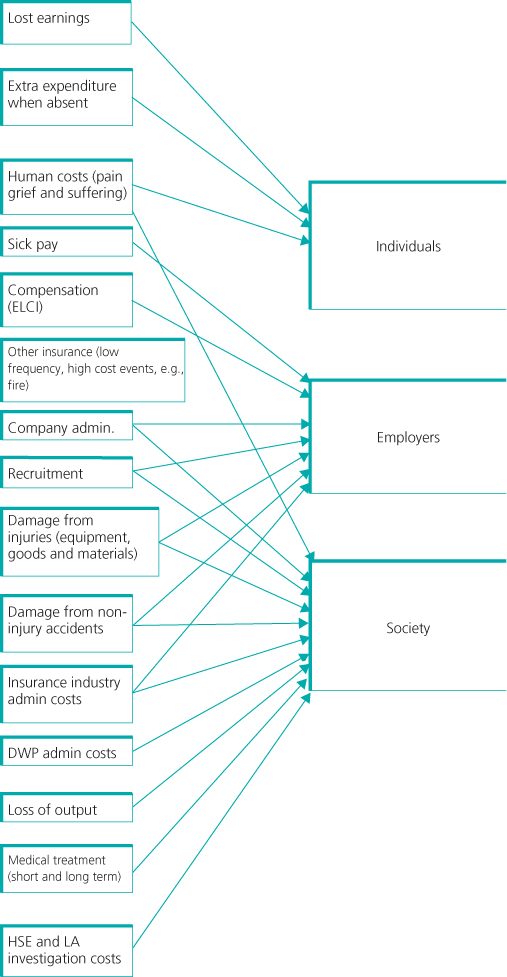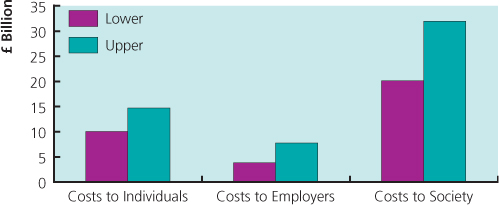Overview
Work has an important influence on health, both public and individual. It brings great health benefits but can also be detrimental to both
Work related injuries and illnesses take a terrible toll and have massive socioeconomic effects. They are largely preventable
Occupational disease is particularly poorly reported at a national level. Healthcare professionals need to suspect it and know how to manage it
The world of work is changing fast and the spectrum of occupational ill health is changing in tune
‘Traditional’ occupational diseases persist in less well regulated industries but mental health and musculoskeletal disorders and hard to define ‘symptomatic’ illness are the major causes of work-related disability
Most readers of this book will consider themselves lucky to have a job, probably an interesting one. However tedious it can be, work defines a person, which is one reason why most people who lack the opportunity to work feel disenfranchised. As well as determining our standard of living, work takes up about a third of our waking time, widens our social networks, constrains where we can live and conditions our behaviour. ‘Good’ work is life enhancing, but bad working conditions can damage your health.
Global Burden of Occupational and Environmental Ill Health
According to recent International Labour Organisation (ILO) calculations, every day 6300 people die as a result of occupational accidents or work-related diseases—more than 2.3 million deaths per year (including 12 000 children)—and 337 million people have workplace injuries, causing disability and time off work. Two million workplace-associated deaths per year outnumber people killed in road accidents, war, violence and through AIDS, and consume 4% of the world’s gross domestic product in terms of absence from work, treatment, compensation, disability and survivor benefits, not to mention the human cost (Figures 1.1 and 1.2).
The burden is particularly heavy in developing countries where the death rate in construction, for example, is 10 times that in developed countries, and where workers are concentrated in the most heavy and dangerous industries—fishing, mining, logging and agriculture.
In the United States some 60 300 deaths from occupational disease, 862 200 illnesses and 13.2 million non-fatal injuries with 6500 deaths occur each year.
Environmental disease is more difficult to quantify because the populations at risk are more diffuse than the working population. As an example, it is estimated that lead poisoning accounts for almost 1% of the global burden of disease, most of the exposure affecting children in the developing world. Air and water pollution and extremes of climate also have profound effects on health
Reporting Occupational Ill Health
Occupational diseases are reportable in most countries, but are usually grossly underreported. Even in countries like Finland (where reporting is assiduous), surveys have shown rates of occupational disease to be underestimated by three to five times.
Classifications of occupational diseases have been developed for two main purposes: for notification, usually to a health and safety agency to provide national statistics and subsequent preventive action, and for compensation paid to individuals affected by such diseases. There are no universally accepted diagnostic criteria, coding systems or classifications worldwide. Modifications of ICD-10 (international classification of diseases, 10th revision) are used in many countries to classify occupational diseases, along with a system devised by the World Health Organization for classifying by exposure or industry.
It is the association of these two sets of information that defines a disease as being probably occupational in origin (Box 1.1). The WHO, in the ICD11 classification, is going to incorporate occupational attribution.
Notification
Classification for Labour Statistics (ILO)
- International Classification of Status in Employment (ICSE)
- International Standard Industrial Classification of all Economic Activities (ISIC)
- International Standard Classification of Education (a UNESCO classification) (ISCED)
- Classifications of occupational injuries
A number of reporting systems exist in the United Kingdom but these are neither comprehensive nor coordinated. After all, they arose at different times and for different purposes.
Occupational injuries are also reportable in Great Britain under the Reporting of Injuries, Diseases and Dangerous Occurrences Regulations 1995 (RIDDOR) and, for purposes of compensation, to the Department of Work and Pensions’ Industrial Injuries Scheme (see also Chapter 5). The recording of injuries is generally more reliable because injuries are immediately obvious and occur at a definable point in time. By contrast, cause and effect in occupational disease may be far from obvious, and exposure to hazardous materials may have occurred many years beforehand (Box 1.2).
Self-Reported Ill Health 2009–2010
Stay updated, free articles. Join our Telegram channel

Full access? Get Clinical Tree




